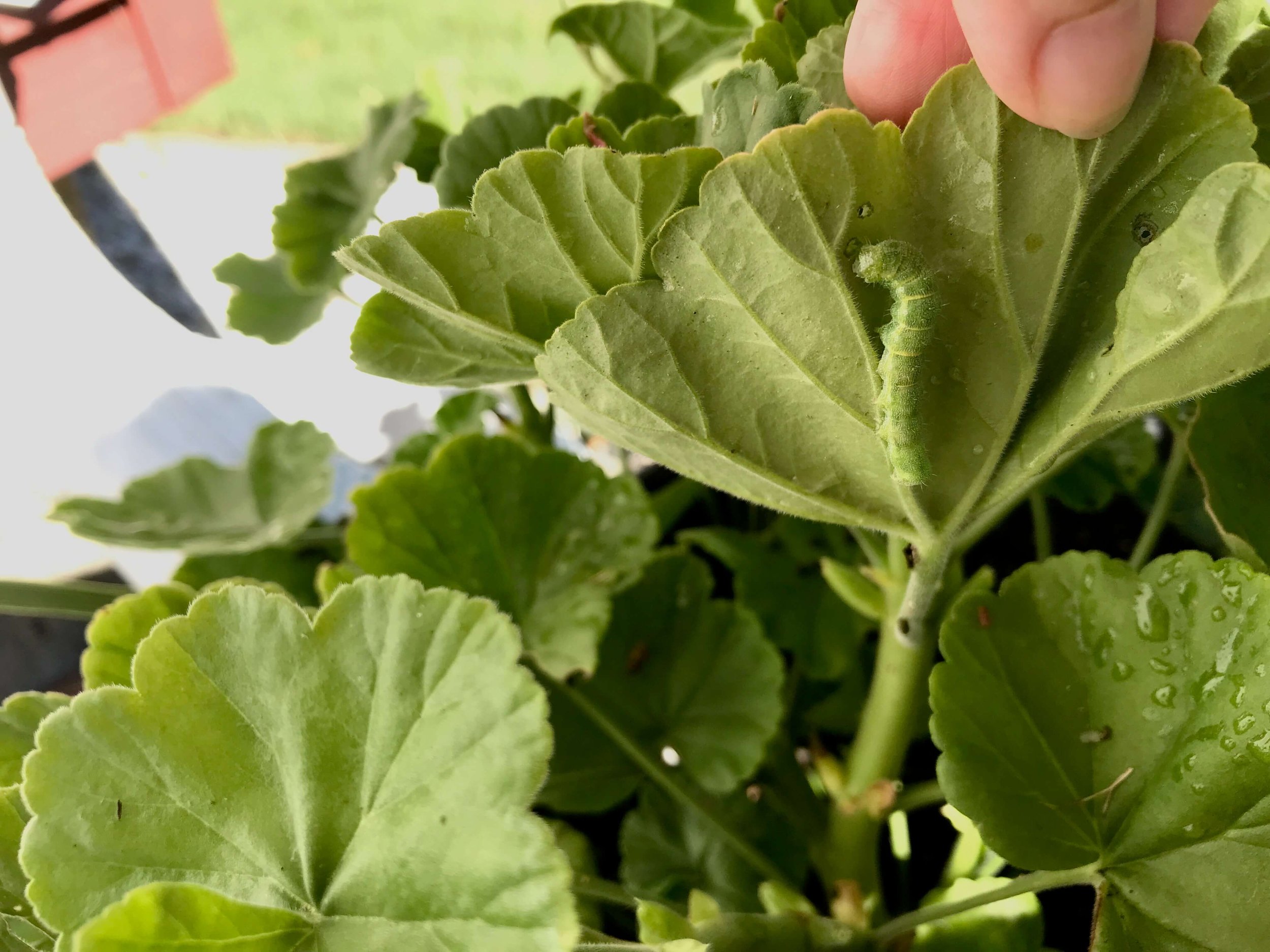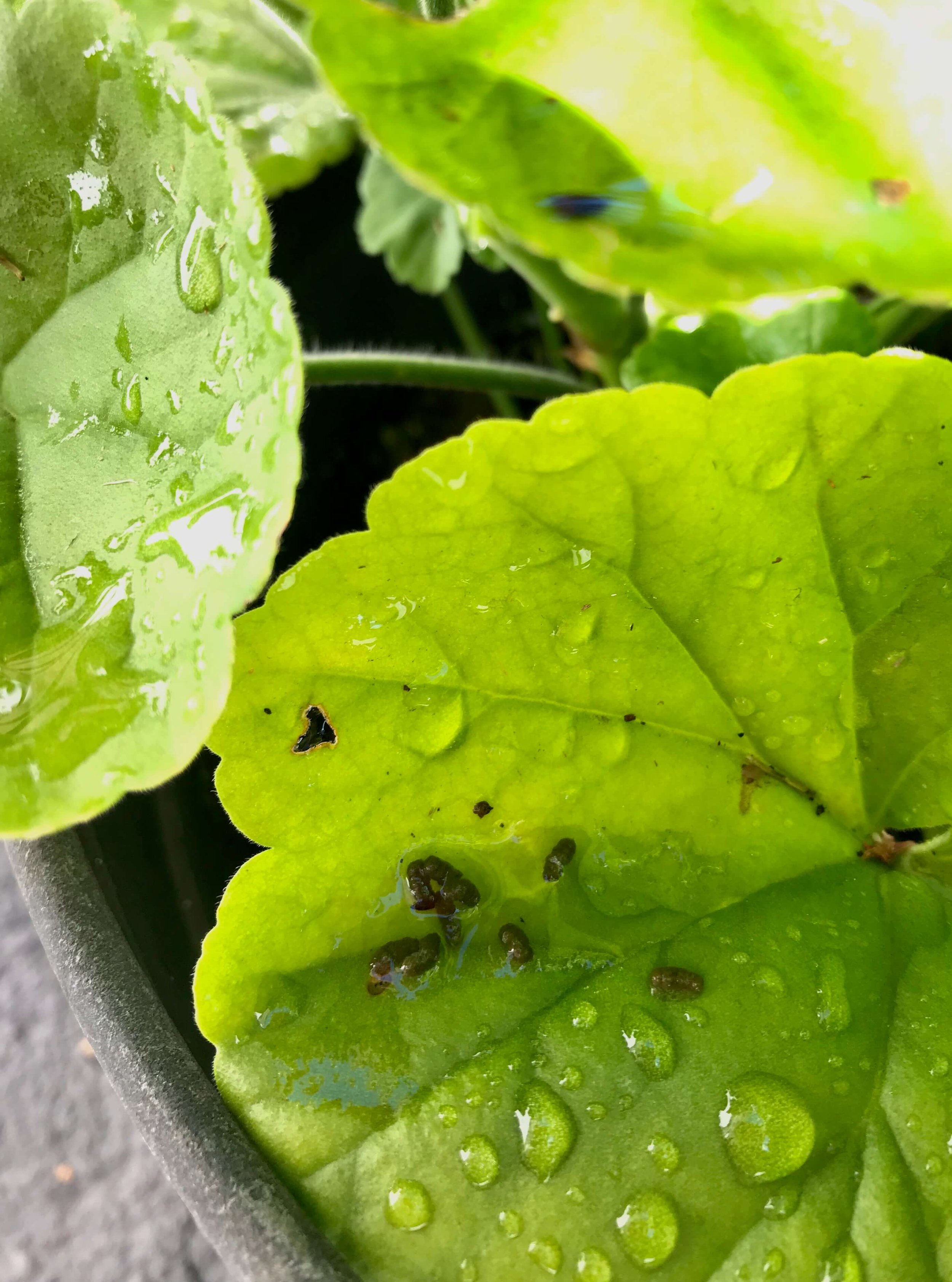The Battle of the Budworms: Protecting Flowers From These Pests
Tobacco Budworm
Your beautiful geranium and petunias are being eaten by an unknown creature, and you need to find out what it is and how to stop it.
These pesky little creatures are called tobacco budworms, and they can do a lot of damage to your plants if left unchecked.
In this blog post, we will discuss what budworms are, how to identify them, and how to protect your plants from their damage.
The items listed are accompanied by affiliate links, meaning I earn a small commission if a purchase is made through my links. This has no impact on the cost to the consumer. I link to products this way whenever possible, and it has no bearing on the products I choose to review or recommend.
What are Budworms?
“Budworms can destroy your geraniums and petunias without you even knowing.”
Ever noticed a geranium or petunia flower bud looking chewed up and hollowed out?
Chances are, that's the work of tobacco budworm (Heliothis virescens). Also known as geranium budworms are small but destructive creatures in the moth family.
These minute caterpillars begin their life as tiny larvae, barely over 1/16 inch long, and are ivory with brown heads and light stripes.
These pests can grow up to 2 inches through the summer and change color to green, purple, or black! While this transformation is taking place, they are also busy wreaking havoc as they eat away at flower buds.
Geranium Budworm
You can see the budworm camouflaging into the back side of one of my geranium leaves. They like to hide during the day and do their damage at night.
Life Cycle of Budworms
As winter fades and the world transforms into an oasis of renewal, a surprise visitor begins to appear - Geranium Budworm!
From mid-March to mid-April, these little tan and brown moths make their appearance in search of buds where they can lay eggs for future hatching. The larvae eagerly devour blossoms from within until finally grow in size before making a slow descent down toward the soil below.
Here, these little critters transform into adult moths again starting this unique cycle all over again just as new blooms arrive each spring.
Signs of Budworms
So how do you know if you actually have budworms and that they are the culprits destroying your flowers? There are several signs you can look for, including:
Holes in buds, petals, and leaves
Here are the classic holes in the buds of a geranium.
Droppings on the plant itself (will look like black pellets)
Here is a sign of budworm poop.
Missing flower buds/lack of blooming
A lack of blooms and buds on this geranium plant.
In late summer, you can often find budworm caterpillars on the flowers
I picked one of the budworms off and put it next to a penny to compare its size.
Flowers Most Susceptible to Damage from Budworms
Some flowers such as petunias, geraniums, and nicotiana are more susceptible to budworm damage than others. Budworms will sometimes bore into rose buds and other tend young plants. Budworms scour the terrain for blooming buds and tender shoots, in quest of sustenance.
Whether you’re growing these types of flowers in a garden or containers, they should be monitored closely for signs of budworm infestation.
RELATED: Why Your Geranium Leaves Are Turning Yellow and Solutions
This is an example of the damage you might see when budworms are at work. Make sure you regularly inspect your plants.
You can see the damage budworms are doing to the buds of this geranium.
Damage From Budworms
Budworms are well known for their capacity to cause devastating damage to plants, particularly when it comes to flowers. For many gardeners, the sight of tiny caterpillars munching away on precious petals can be heart-wrenching – and damaging too!
Damage from budworms is clear; affected flowers will fail to open, dry up and eventually die. Older caterpillars eat whole flower buds and feed on the petals, leaving a flower looking disheveled and unkempt.
When infestations are severe, plants may not produce any viable flowers at all during the summer months. As such, fighting back against budworms as soon as you notice them is essential to ensure that your garden remains healthy and full of floral beauty throughout the season!
How to Get Rid of Budworms
If you have determined that your flowers are infested with budworms, there are several ways to protect them.
How to Get Rid of Budworms Naturally
Protect your plants with a hands-on approach! Handpicking budworms off of flowers is an effective way to keep them away without risking harm - though it can be quite time-consuming. A few minutes spent each day picking the little pests pays huge dividends in pest control and plant health!
Natural Spray for Budworms
The battle against budworms can be won with the help of Bacillus thuringiensis (Bt)! Bt is one of the best sprays for budworms.
Timing is critical when it comes to protecting your plants from budworms! Making sure you apply Bacillus thuringiensis (Bt) just as the first few eggs start hatching will ensure maximum efficacy.
Not only does Bt target pesky caterpillars without harming other critters, but its naturally-occurring formulation also makes it safe and effective - provided you can catch those pesky buggers in time before they do too much damage!
Insecticide for Budworms
Getting rid of pesky tobacco budworms can be tricky for gardeners, but there are some products available to help fight these tiny terrors.
Spinosad and certain pyrethroid insecticides have the residual activity necessary to keep caterpillars away from your plants, while others such as pyrethrins and imidacloprid won't make a dent in deterring pests.
However, if you're trying to protect blooming flowers from infestation it's important not to use any pesticide that might harm pollinating insects like bees - after all those little guys do an awful lot for us!
How to Prevent Budworms
Prevention is the best remedy when it comes to budworms! Getting into a routine inspection is an easy way to spot any budworm issues before they become a problem. Before petunias and geraniums have had time to bud in early spring and late May, give your garden a once over.
Those pesky budworms can be a tricky foe, with some cleverly camouflaging themselves to blend in seamlessly with their host plant. Let's not forget the tiny babies either who are experts at sneaking into buds and staying undercover!
The best time to inspect your flowers for signs of budworms is in the early evening as budworms tend to be most active during the twilight hours and will play hide and seek during the day. Once the daylight fades, pull on some gardening gloves and take a closer look at your plants.
Getting familiar with their signs of presence will help you stay ahead of any damage that could occur down the line. Budworms are relentless munchers, so don't let them take over your hard-earned garden!
The budworm is trying to hide by curling up.
Summing up Dealing with Tobacco Budworms
Tobacco budworms are pesky garden pests that can wreak havoc on your flowers if left unchecked. Fortunately, there are several strategies you can use to get rid of them and protect your plants from infestation.
With some patience and perseverance, you'll have no problem keeping tobacco budworms at bay this summer season so your blooming beauties can thrive!






















